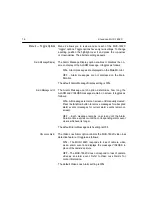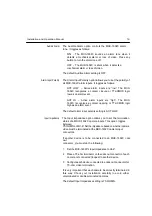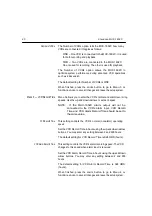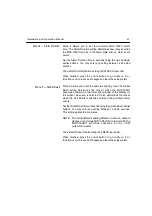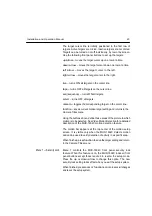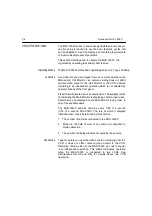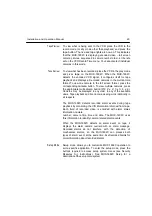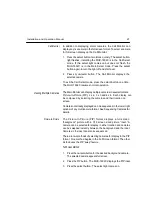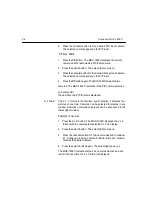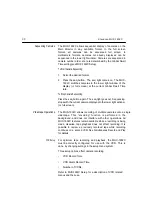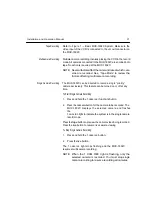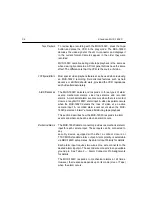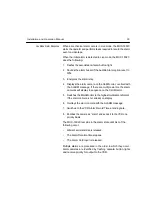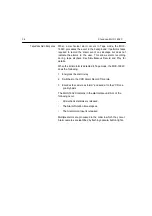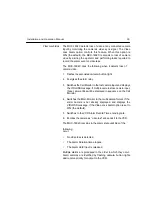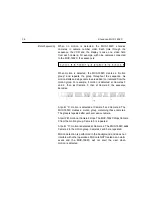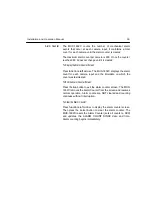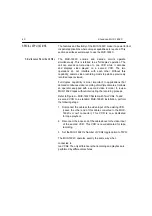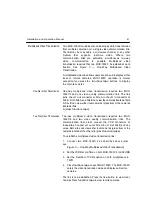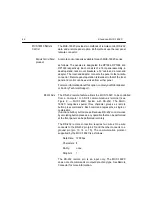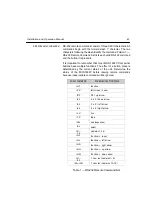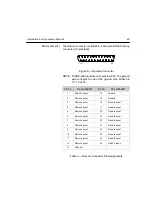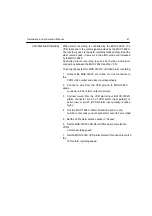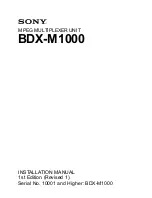
32
XtendLan MUX-1602C
Tape Playback
To review tape recording with the MUX-1602C, press the
tape
button
and place the VCR in the play mode. The MUX-1602C
decodes the
video signal at the
vcr in connector and displays it
in the current
format. Cameras appear in the order they were
recorded.
MUX-1602C operation during videotape playback is the same as
when
viewing live cameras. All front panel buttons have the same
effect.
The difference is that the VCR is the source of video.
VCR Special Effects
Most special video playback features can be used while reviewing
an MUX-1602C recording. Field oriented features such as field
advance
or still field should work, provided the VCR reproduces
each video
field accurately.
Alarm Response
The MUX-1602C detects and responds to three types of alarm
events:
mechanical alarms, video loss alarms and recorded
alarms. A
mechanical alarm event occurs when there is a contact
closure at
any MUX-1602C alarm input. A video loss alarm occurs
when the MUX-1602C
detects the loss of video at an active
camera input. A recorded
alarm event occurs when the MUX-
1602C detects an “alarm” encoded
field during tape playback.
This section describes how the MUX-1602C responds to alarm
events
and what can be done when an alarm occurs.
Mechanical Alarms
The MUX-1602C
alarm connector provides one mechanical alarm
input
for each camera input. These inputs can be connected to
any
security device equipped with either a contact closure or
TTL/CMOS standard alarm output. Alarm polarity is selectable
via MUX-1602C setup menus. See
Alarm Input Polarity
for details.
Each alarm input requires two wires. One wire connects to the
desired alarm input pin. The second wire connects to any available
ground pin. See
Table 2 — Alarm Connector Pin Assignments
for
details.
The MUX-1602C responds to mechanical alarms at all times.
However,
that response depends upon its mode (Live or Tape)
when the
alarm occurs.

